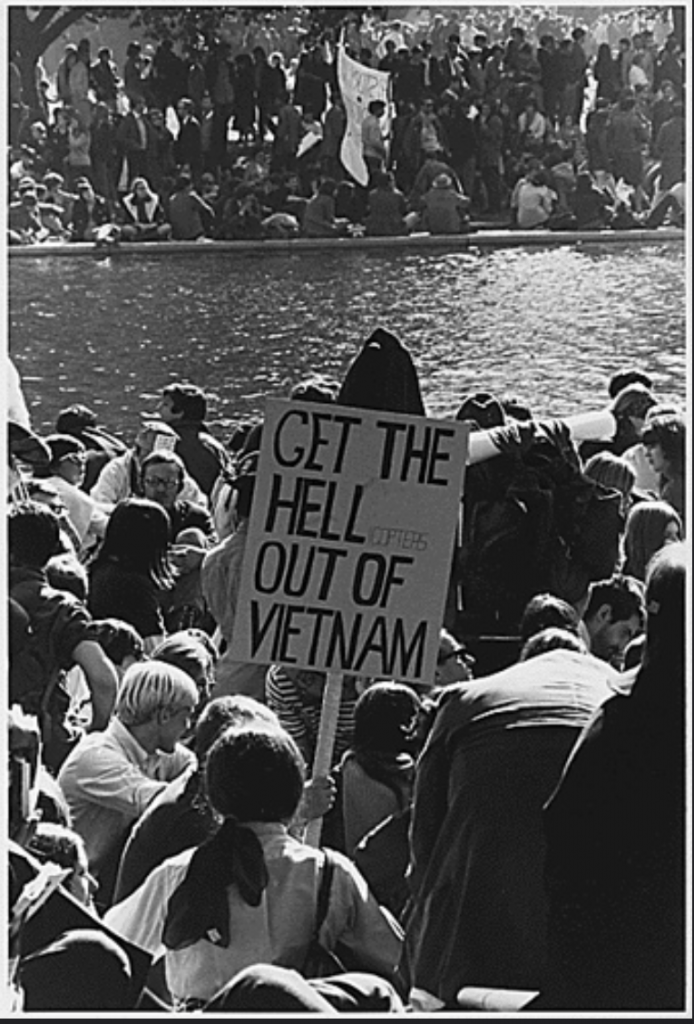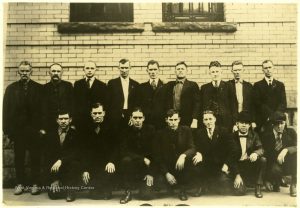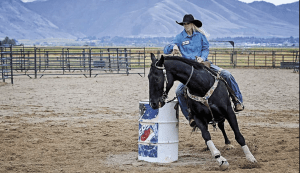When one hears the word “Pinkville,” one imagines a cute, quaint village, right? However, the real Pinkville is the exact opposite of this perception. Pinkville was a term U.S. soldiers coined the Vietnamese village of My Lai, where one of the most inhumane moments of the Vietnam War happened. Blood, rape, and the screams from the brutal murder of children, women, and elderly are burned into our minds when we envision the My Lai Massacre in 1968.1
The Vietnam War began in 1954 when communist leader Ho-chi-minh defeated the French, who had colonized Vietnam in 1887. North and South Vietnam battled over their new government, as South Vietnam desperately tried to resist communist control. Amidst the heat of the Cold War between America and the Soviet Union, and afraid that communism would spread throughout Southeast Asia, the U.S. government ordered military involvement in 1964. The U.S. drafted healthy men age 18 or older to fight the war in Vietnam. Being a soldier stationed in Vietnam at this time came with immense stress. Spread thin, American soldiers were stationed in Vietnam for double the time a soldier was normally deployed, and they were only allowed a one month break, adding to this high amount of tension. There, soldiers saw incredibly brutal things daily — children were often used as weapons by the Vietnamese army and the language barrier made it incredibly hard to distinguish between friend and enemy. One soldier described their encounter with “gooks,” an extremely derogative term for Southeast Asians, “At first there was some confusion. How did you tell gooks from the good Vietnamese, for instance? After a while it became clear. You didn’t have to. All gooks were [Vietnamese Communist] when they were dead.”2 U.S. soldiers developed paranoia, and although the exact reason why the U.S. Commanders ordered the massacre is not known, one can presume it was due to the uneasy situation between the U.S. soldiers and the Vietnamese, which also led to the brutality at Pinkville.3
The U.S. military believed that Pinkville was booby-trapped to the extreme, and it was unknown whether or not the residents supported the Vietnamese communists, also referred to as Vietcong. Because of this, an order was placed by the Charlie Company — a unit of the U.S. Army American Division — to destroy all of the village inhabitants, and to leave no survivors. This order led to the most brutal and controversial massacre of the U.S. Army’s history. After the order was placed, the My Lai massacre was led by Lieutenant William Calley, followed by another Charlie Company unit, and it involved the vicious murder and rape 300 to 500 of women, children, and elderly civilians.4However, this dark moment in history remained a secret. It was not revealed to the U.S. public or even the U.S. government until months after the event had taken place.
Ron Ridenhour, a U.S. soldier who was serving in Vietnam at the time, played a central role in exposing the events that happened in the previously peaceful village of My Lai. Ridenhour was a helicopter gunner that had been drafted to the army at the same time as a man named Mike Terry. There, they became close friends, separated only once to different divisions when Terry was assigned to Lt. Calley’s platoon. That one separation caused a major change in Terry when he and Ridenhour were eventually reunited after being assigned to the same unit. Previous to their separation, Ridenhour thought Terry to be the definition of innocence as Terry was firm in his religious beliefs. Ridenhour was hit with the shock of his life when Terry told him the events that occurred in My Lai.5

Ridenhour, although not present at the event, began to hear about the events that took place at My Lai from Terry.6 Although Terry only participated in mercy killings to eliminate those who were mortally wounded and prevent them from suffering further, shock and horror filled Ridenhour as he heard about the rest of the gruesome details. Ridenhour, in absolute disbelief, almost refused to believe the event occurred. Determined to uncover the truth, he then consulted numerous other soldiers, expecting denial of this brutality, but instead, the soldiers added more horrific information to the massacre that occurred that day. Spurred to action, Ridenhour wrote a letter to President Richard Nixon and thirty Congressmen about these findings. In his letter, he recounted the numerous statements he had heard from soldiers who were at this massacre. Ridenhour recalled one soldier’s encounter with a Vietnamese child about three or four years old, who had been shot in the arm, “The boy was clutching his wounded arm… while blood trickled between his fingers… He just stood there with big eyes staring around like he didn’t understand… Then the captain’s [radio operator] put a burst of M16 fire into him…”7 He continued to describe more encounters, and even recalled the story of a soldier who shot himself in the foot to get out of participating in the massacre. Further testimonies describe the “bayoneting, clubbing, and close-range shooting” of unarmed civilians.8 Ridenhour also described how the soldiers systematically lined up villagers along a ditch and fired into them, comparing it to the Holocaust.9 Angry that this event happened and dedicated to exposing these horrors to get justice, he urged the U.S. to pursue an investigation, and he ends the letter with the fact that he had considered sending this story to the reporters and newspapers to add pressure to the government to follow through with the investigation.10

After the investigation was exposed to the public, Ridenhour felt that the government “whitewashed” the event and wanted justice.11 With the help of a reporter named Seymour Hersh, they exposed the brutal event to the public, causing a rise of emotions globally. The massacre sparked controversy, disbelief, disgust, and anger in the public, especially among the American people. Ridenhour’s shock at even Terry’s involvement in the massacre mirrored the U.S. public’s shock as it unveiled the truth of what the Army and U.S. government were doing overseas. The My Lai Massacre became a turning point in the Vietnam War regarding U.S. involvement, leading many people to adamantly question if U.S. involvement in Vietnam was doing more harm than good. There had already been many protests against the involvement of the U.S. in the Vietnam War and against the draft targeting people of color. However, after Ridenhour exposed the massacre, protests increased exponentially among the American public. Eventually, these protests helped pressure the U.S. government to move troops out of Vietnam.12

Charges were brought up against thirty soldiers after the incident of My Lai was exposed, but only one person was convicted — Lieutenant Calley. Ridenhour believed the U.S. Army and the government used Calley as a scapegoat for all of the U.S. troops involved that day, since Calley was the lowest ranking officer leading this massacre. He was sentenced to life in prison, but due to the enormous amount of publicity regarding the massacre, it was deemed that his trial was unfair and too harshly affected by public view. His sentence was decreased to 20 years, and then to 10 years, after which President Nixon intervened and he served a three-year house arrest sentence.13
Although this massacre is shrouded in injustice for the hundreds of women, children, and elderly that lost their lives that day, Ridenhour and the few U.S. soldiers that risked their lives to go against orders and save as many Vietnamese civilians as possible represent those with true bravery and dedication to justice. Ron Ridenhour played a major role as the My Lai whistle blower, helping bring the truth of the injustice that happened to hundreds of innocent people in the village of My Lai to the public. Today, Ridenhour Prizes are awarded to journalists who follow Ridenhour’s example of being dedicated to truth telling in their writing and protecting social justice. These awards demonstrate the long-lasting importance of Ridenhour’s act of integrity and truthfulness.
- Donna Batten, “My Lai Massacre,” Gale Encyclopedia of American Law, 3rd ed., Vol. 7. (Detroit: Gale, 2010), 164-165. ↵
- Dan Duffy, and Tal Kali, The Viet Nam Generation Big Book (Woodbridge, Conn. : Viet Nam Generation Inc, 1994), 203-214. ↵
- Donna Batten, “My Lai Massacre,” Gale Encyclopedia of American Law, 3rd ed., Vol. 7. (Detroit: Gale, 2010), 164-165. ↵
- Ian Shapira, “‘It was Insanity’: At My Lai, U.S. soldiers slaughtered hundreds of Vietnamese women and kids,” Washington Post, March 16, 2018. ↵
- Dan Duffy, and Tal Kali, The Viet Nam Generation Big Book, (Woodbridge, Conn. : Viet Nam Generation Inc, 1994), 203-214. ↵
- Dan Duffy, and Tal Kali, The Viet Nam Generation Big Book, (Woodbridge, Conn. : Viet Nam Generation Inc, 1994), 203-214. ↵
- Lily Rothman, “Read The Letter That Changed the Way Americans Saw the Vietnam War,” Time Magazine, March 16, 2015. ↵
- Stephen L. Carter, “My Lai Revisited,” Newsweek, April 2, 2012, 19. ↵
- Ron Ridenhour, “Perspective on My Lai: ‘It was a Nazi kind of thing,'” Los Angeles Times, March 16, 1993. ↵
- Lily Rothman, “Read The Letter That Changed the Way Americans Saw the Vietnam War,” Time Magazine, March 16, 2015. ↵
- John H. Jr. Cushman, “Ronald Ridenhour, 52, Veteran Who Reported My Lai Massacre,” New York Times, May 11, 1998. ↵
- Donna Batten, “My Lai Massacre,” Gale Encyclopedia of American Law, 3rd ed., Vol. 7. (Detroit: Gale, 2010), 164-165. ↵
- Cynthia Rose, “Lieutenant Calley: His Own Story,” American Decades Primary Sources, Vol. 8, 1970-1979 (Detroit: Gale, 2004), 297-301. ↵



50 comments
A. Nony Mous.
The truth is that this kind of repulsive action by American troops is not unusual. There are plenty of stories about racist massacres by U.S. troops, including during the Korean war, during which innocent Koreans were massacred under a bridge at Toko Ri, and an incident Iraq, when U.S. troops opened fire on Iraqi citizens in cars during a massive traffic jam, killing civilians, and according to a report, bullets exploded a mother’s head in front of her children. We sent troops to Iraq on Kissinger’s advice to George Bush to have a war in Iraq. It was claimed that Iraq “had weapons of mass destruction,” which were never found, and used as an excuse to start the war. The massacres of innocent civilians are the tip of the iceberg, and the idiots who commit such acts in other countries amuse themselves when there is no war by killing little children in our schools, or innocent people at concerts or other gatherings. It’s because we glorify killing in our movies, on our televisions, in our history, in our books. Look what we did and continue to do to Native Americans and native creatures in America; slaughter, slaughter, slaughter; listen not to God’s admonishment against killing… This “civilization” and its’ tenets are demented. We should seek God in all ways, all things; especially within ourselves. He CAN be found; “seek and ye shall find.”
Haley Ticas
This a new article to me, as its something I had never heard of before. I was shocked reading about the My Lai Massacre because I learned about a new topic and about Americas darkest times. This article showed showed how important it is to have good and factual evidence and details within a historic article. It also showed me another example of how harsh war truly is.
Edward Cerna
This was such a great article because it really shows just horrific war crimes are. This article really educated me because I was not fully aware of this topic. It is sad just how evil mankind can be to one another and just how dark history is. It is unfortunate just how much of history is simply passed over. I am glad this article was written because it brings more light on this horrible event and the inhumane practices of the United States. Overall, this was a very well written article and it was enjoyable to read.
Victor Rodriguez
What a way to expose the suffering and effects of war. War crimes and violations are horrific. The abuses to humanity in war brings the worst out of people and leaves a country terrified. It is absolutely atrocious how many people get away with the war crimes they commit because many of these events are hidden and not recorded. I really like how the article emphasizes the terrible war crimes and exposes these actions to bring awareness.
Aaron Peters
This was an incredibly informative peice, revealing the utterly depraved lengths the US Military went to attempt to win a war. Even after committing such a heinous crime with brutal efficiency, The United States still failed at their goal off crushing the North. Overall, the people of Mai Lai and Vietnam as a whole suffered due to the actions of foreign powers.
Danielle Slaughter
Hey, Sarah.
It is really a testament to how much this event is covered up, even today, that I had never heard of the My Lai massacre until last semester. We watched a video for it for Dr. Hufford’s Causes of War course, and I felt sick to my stomach the rest of the day. Hearing what these soldiers did to these innocent people, and with seemingly no regard to their humanity, left such a sour taste in my mouth that I couldn’t read anything about the Vietnam War without recalling this massacre.
The story of Vietnam as a whole is a sad one – rife with colonization, subjugation, and civil war. It is understandable, then, that it remains in development as a Southeastern Asian nation, especially considering the terrors inflicted by outside forces.
Marian Reyes
This article shows both the good and the worst that human beings are capable of; from the soldiers and commanding officers that committed this massacre, to the brave few that decided that something must be done. The part I enjoyed most about this article is the continued fight for justice Ridenhour sought. He was not satisfied with the decision of the court and continued to fight for justice for years later.
Aaron Sandoval
This article was very well written, and the author did a great job of detailing the events that occurred, and the lives that were destroyed. The My Lai massacre truly is a scar on America that may never heal, but as the author stated there is hope in those who stood up against the government and risked their lives to speak the truth. The Vietnam war was a very tragic period in our history and one that we should never forget. Like in most countries, these type of events leave permanent scars on the country and greatly affects their social and political policies.
Grace Frey
Sarah, thank you for writing this enlightening article. I am sure it wasn’t easy to talk about the atrocities that were committed by the United States, but it is important that we do not forget the mistakes we made. The U.S. decision to partake and perpetuate the Vietnam war is perhaps one of our greatest failures in judgement. America’s involvement in developing countries needs to be more scrutinized and decisions need to be made for the ultimate benefit of the developing country, not our nation’s interests.
Camila Garcia
The article really exemplifies how dark the issue was, I knew that it was something horrible that happened however this article really educated me on how inhuman the United States actions were. I feel as if American history glosses over things like this and this really brought its evil past into light. The images were really thought provoking and really added weight to the article. I did not know about what happened to the women and children.